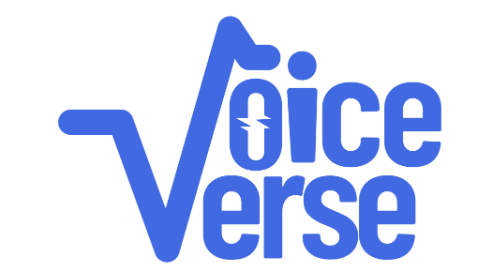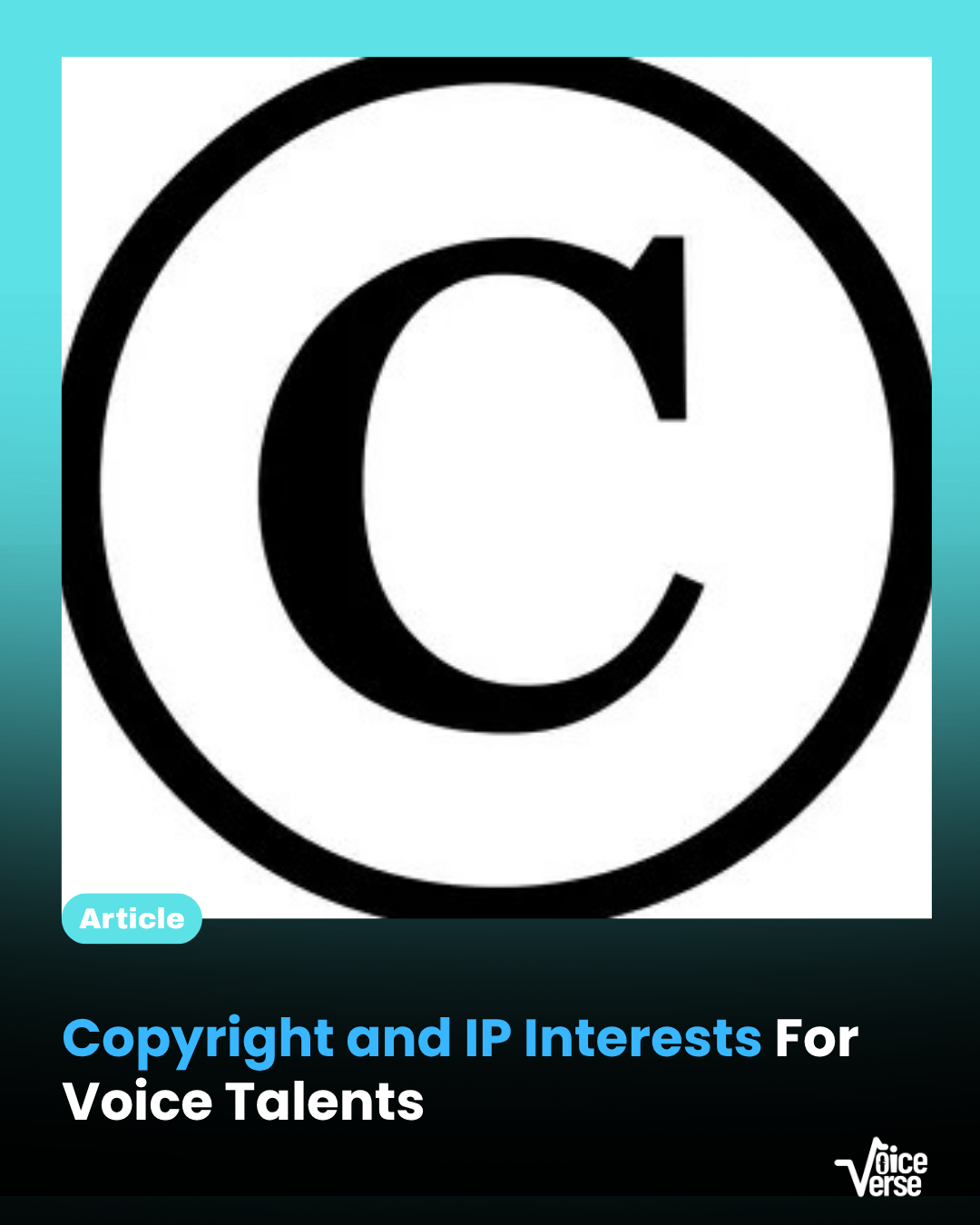Written By: Cynthia (CYNERGY)
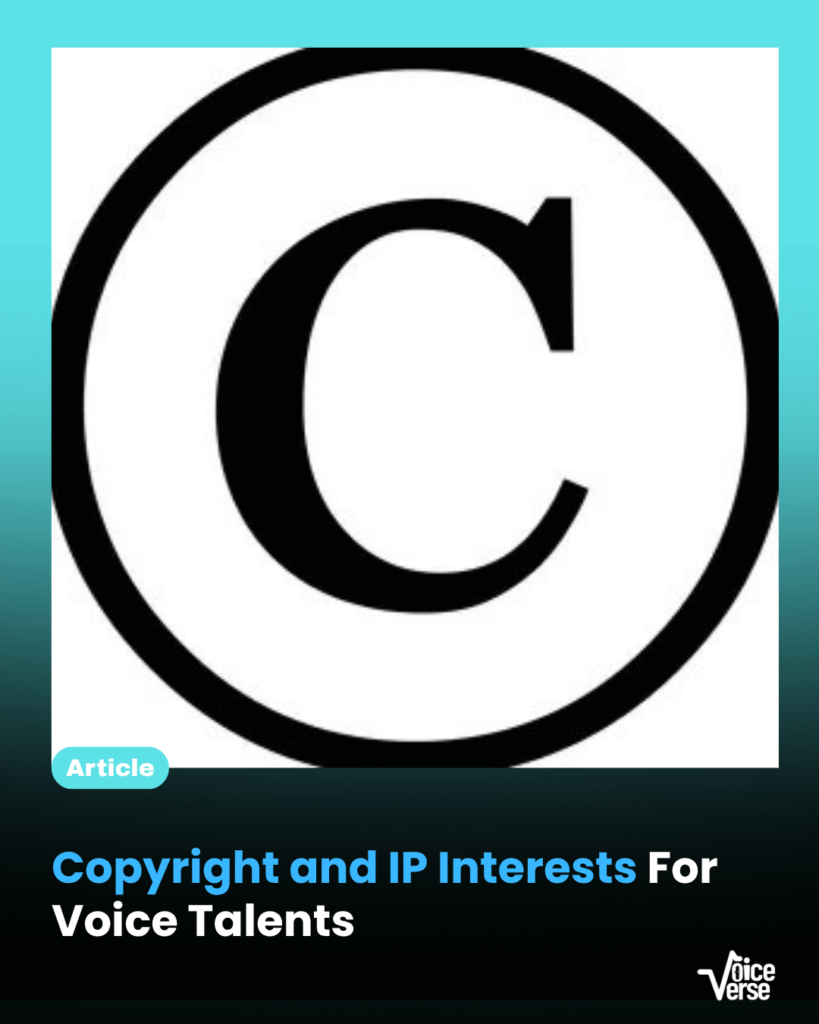
With the rise of Artificial Intelligence (AI), voice cloning and synthesizing, it has become expedient that voice artists gain an awareness of copyrights and Intellectual Property (IP) protection.
Though often used interchangeably, IP and copyrights are quite different. Intellectual Property is the overarching term, and according to the World Intellectual Property Organization (WIPO), it refers to the “creations of the mind, such as inventions; literary and artistic works; designs; and symbols, names and images used in commerce.”
Copyright, on the other hand, exists as a subset (or specific type) of IP, geared towards the protection of original works of authorship, such as books, music, art, sculptures, software, and voice/sound recordings or broadcasts.
They are legal rights upheld nationally and internationally by various laws and agencies, like the Nigerian Copyright Commission, the Nigerian Copyright Act (Chapter C28 Laws of the Federation of Nigeria 2004). Other subsets are protected in Nigeria under the Trademarks Act (LFN 2004) and the Patents and Designs Act (LFN 2004). As well as internationally by WIPO, the Berne Convention for the Protection of Literary and Artistic Works (1886), etc.
All these frameworks upholding these concepts mean the rights are legal, recognized, protected, and enforceable by the law and court systems. It grants the creator/author of any original work exclusive rights to the use and distribution of said work, with the intent of enabling the creator to receive compensation, because the law recognizes that creators or owners need to be able to benefit from their work, and investments made in their creations.
The author of these copyrightable creations typically holds such rights throughout their lifetime, including an additional 50 to 70 years, depending on the jurisdiction. According to the Copyright Alliance, where work is co-authored, the protection exists, “for the length of the life of the last surviving joint author plus another 70 years.” While, for work published anonymously or under a pseudonym, the “copyright term is either 95 years from the year of first publication or 120 years from the year of creation, whichever expires first.”
WHY DOES AI POSE A DANGER TO IP AND COPYRIGHTS?
- Rapidity of the evolution of AI technology
In July 2025 alone, two new AI voice-product launches have been recorded. French AI startup, Mistral, released Voxtral, its first open-source AI audio model, on July 15. Voices.com, a voice-hiring platform, launched its product on the 17th of July.
AI companies continue to expand their operations, and the desperation to invent the next big thing to further “wow” the market may spur them to cut corners, eroding or crossing legal lines to harness more diverse voices and make their models more realistic.
Additionally, the faster the technology evolves, the more things fall through the cracks — the law cannot build up a defence when the goal post keeps changing. Many things are bound to escape early notice, and usually that involves some later-felt detriment to voice artist rights.
2. Ease of Voice Cloning
AI is now able to generate a replica of a voice from a small sample. However, there are no safeguards to ensure that the sample was obtained with consent.
3. The Risk of Non-consensual Voice Usage
One should have absolute rights over how their “property” (physical or intellectual) is used. Similarly, a person’s work has a structure under which it was created. If their voice is extracted and utilized to construct something different, then the “intellect” part of the equation is also eroded.
Once an AI platform produces a voice clone (with permission or otherwise) and distribution begins, there is the concern that it can be used for undesignated purposes — including in scenarios and contexts the original voice artist would never approve of (e.g. offensive, inappropriate, or even fraudulent content). IP exists to protect work and vision. Unlicensed cloning or usage is a danger to both.
4. The murky waters and potential exploitation of sources
AI might be a threatening factor, but its abilities are reliant on human sources. These AI models are trained on human audio talent; however, not much is known about how copyright-compliant these companies were when they obtained the source materials. It is heavily speculated that AI voice models were trained on copyrighted work (like movies, commercials, voiceover demo reels) without proper licensing. This is especially possible, in the early stages of development, when fewer restrictions existed, and willing (or unwilling) donor-voices were not fully aware of the risks.
5. AI undermines the Creativity that IP and Copyrights protect
An IP right and copyright arise out of the existence of creation, and the need to protect and encourage it. AI models skip this step, and in turn undermine creativity, and the process that does and should accompany it.
If AI trains with and replicates a material or source — it copies tone, signature, and style of delivery, which are all unique aspects of an artist’s creative process.
6. Undermines the Economic Protection Goals of IP
These AI systems have an affinity for speedy generations, while human voice-artists are saddled with navigating numerous, laborious retakes. It is not hard to see why some clients would opt for the cheapness and swiftness of the AI option.
IP protects rights to benefit from work, but if that work is constantly taken up by a faster counterpart, human voice artists become less economically competitive. Why pay studio session fees and talent fees when you can just click a button?
It all leads down the road to the devaluation of the creative labor that copyright aims to protect and keep beneficial.
7. It Affects the willingness of new talents
AI should never be an opportunity-blocker. In its bid to exist, it should not stifle another industry, or hinder its growth — especially when such an industry is human-led. AI must remain in its position as a tool for man, not a replacement.
Conclusion
Although there is much legislative support for the protection of voice talents’ rights against the misuse of their original work, the burgeoning AI industry and the revolution it has brought about continues to present a challenge, with its regular erosion of these entrenched rights and pre-existing principles.
Regardless of the uphill challenge it poses, just as AI evolves, so does the need for stronger (more-responsive) regulatory frameworks, ethical AI-use practices, and heightened awareness among voice talents.
Follow @voiceverseng on Instagram and across other socials for more updates from the voiceover world.
